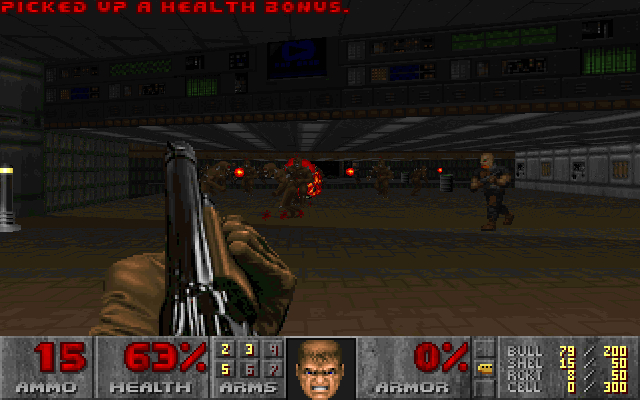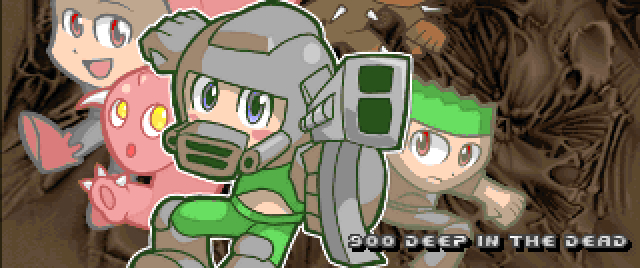
I’ve done a small amount of modding across a few games in the past and found that one of the most rewarding things is seeing what you can do within that game’s limitations, to see how far you can push it and what tricks you can come up with to fudge it the rest of the way.
In the Doom community, this is high art. Actually, they take it a step further. The Doom engine is already pretty confining, but Doom people like to take it to new heights by imposing their own artificial limitations. The limitations of Doom aren’t enough, so these mappers add more to the mix — maximum map size, number of monsters, sector count, or in the case of this month’s WAD, linedef count — to force themselves to be more creative. That’s the theory, anyway: complexity through simplicity. I just made that phrase up but it sounds smart so let’s go with it.
That’s where the 900 in 900 Deep in the Dead‘s rather overwrought title comes from. There are 100 linedefs in each map, over a 9-map episode, and I’m sure you can do the math. Linedefs, if you’re wondering, are… well, a super-oversimplification would be to say that a linedef is a wall. Sort of. But they can also be steps, the sides of a door, the edges of a skylight…
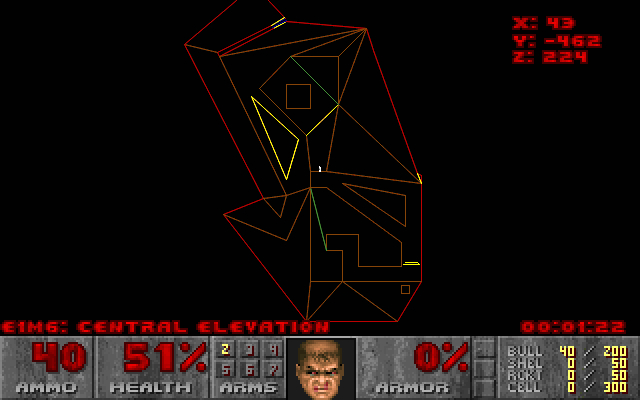
The trick here is not only making every linedef count and serve a precise purpose (they do) or even resorting to makeshift barriers when the linedefs dry up (tech columns and explosive barrels are put to good use), but also reusing them — essentially, it’s all about making sure as many linedefs as possible are double-sided, with playable areas on both sides, so that no real estate goes to waste — and it’s a trick that Jayextee masters by the end of 900 Lines. There’s a clear progression of the concept, from the first map’s innocent beginnings (“Really? That’s it?”) to the penultimate map, which feels as complex and epic as your standard end-of-episode Doom map. But when you consider the crippling limitations it was put together under, that’s pretty amazing.
And really, you’d be forgiven for letting the premise of the WAD slip your mind. Aside from the occasional awkward textures butting up against one another, or a few bits of excessively angular architecture squeezed in out of necessity, the only reminder about the whole 100 linedefs thing is in the length of each map: a few minutes at most. Which puts the entire affair comfortably in fun-sized territory.
If I were to continue my habit of using decidedly un-metal words like “charming” and “lovely” to describe Doom WADs, I’d probably call 900 Deep in the Dead “adorable.” …Is that a step too far? What about “precious?” …I’m making it worse, aren’t I?
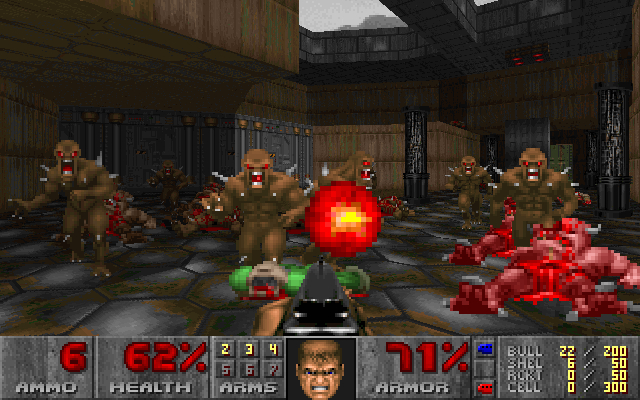
“Loveable?” That’s the manliest one I can come up with. Anyway, the title screen plays up the cute angle, so I think I’m in the clear this time. And actually, that image about sums up the WAD for me — fun, lighthearted, and yes: adorable. It’s so short and breezy (and wonderful) that right after beating it the first time, I went back and started over again. So far, I’ve probably played 900 Deep four or five times from start to finish, and that’s not counting the times I’ve skipped around to play a level here and there.
I fell for 900 Deep by the third map. It starts off a little slow — while Jayextee eases not just the player, but also themself, into the swing of things — though from there it picks up fast.
The first three are what I’d call “traditional,” by which I guess I mean they’re fairly straightforward, with minimal mapping trickery or overly-clever design. They’re fun, and E1M3 especially is the best and most memorable of that bunch, but with the benefit of hindsight, I can say they’re basically just the getting-your-feet-wet stage of the WAD.
The second chunk (because my brain likes to lump things together for the sake of organization) covers E1M4 and E1M5, both of which have some classic hub-type layouts, where the level starts off a little closed or even claustrophobic, but quickly opens and unfolds around a central area. M4 might be the most polished map of the whole WAD and is definitely one of my favorites, though M5 is no slouch, and both of them show off how wonderfully dynamic Doom levels can be, changing and re-changing as the player moves through them.
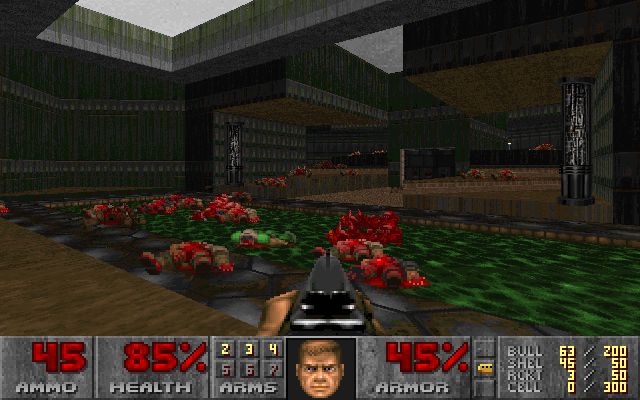
Then we jump back to a somewhat traditional, more static design for M6 and M7. Both feature elevators as their central point, with all areas accessed as stops on the lift. They’re more straightforward, run-and-gunny levels than M4 and 5, but with a free, open-ended quality. M7 is rather circular, with a number of intersecting paths. For such a short, confined level, it ends up being quite the maze.
Also around here, the difficulty reaches its highest point. 900 Deep ain’t ever especially punishing, but it’s got a very solid (more solid than most) difficulty curve that picks up around E1M3 and keeps ramping up almost until the end. There is a steep drop for the last level, though it’s such a cool final battle that I don’t really mind if the only real danger is blowing yourself up with your own rockets.
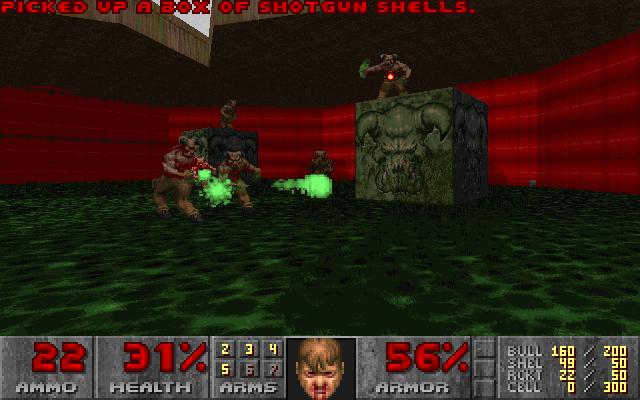
If you can find it, the secret level is a clever little bit of fun as well, though I won’t spoil that for you.
But that’s 900 Deep in the Dead… in a nutshell. Clever, fun, adorable — to assemble a list of several of the adjectives I’ve thrown around in this review. It’s not the experience of many of the WADs I love, but in a way I love it more because it’s not what I typically go for. No great commitment required. I am holding onto 900 Deep’s number, though. I heard something about a sequel.
900 Deep in the Dead requires DOOM.WAD and can be played in vanilla Doom or on any source port under the sun. If you’re not sure how to get it running, this may help. And for more awesome WADs, be sure to check these out!
